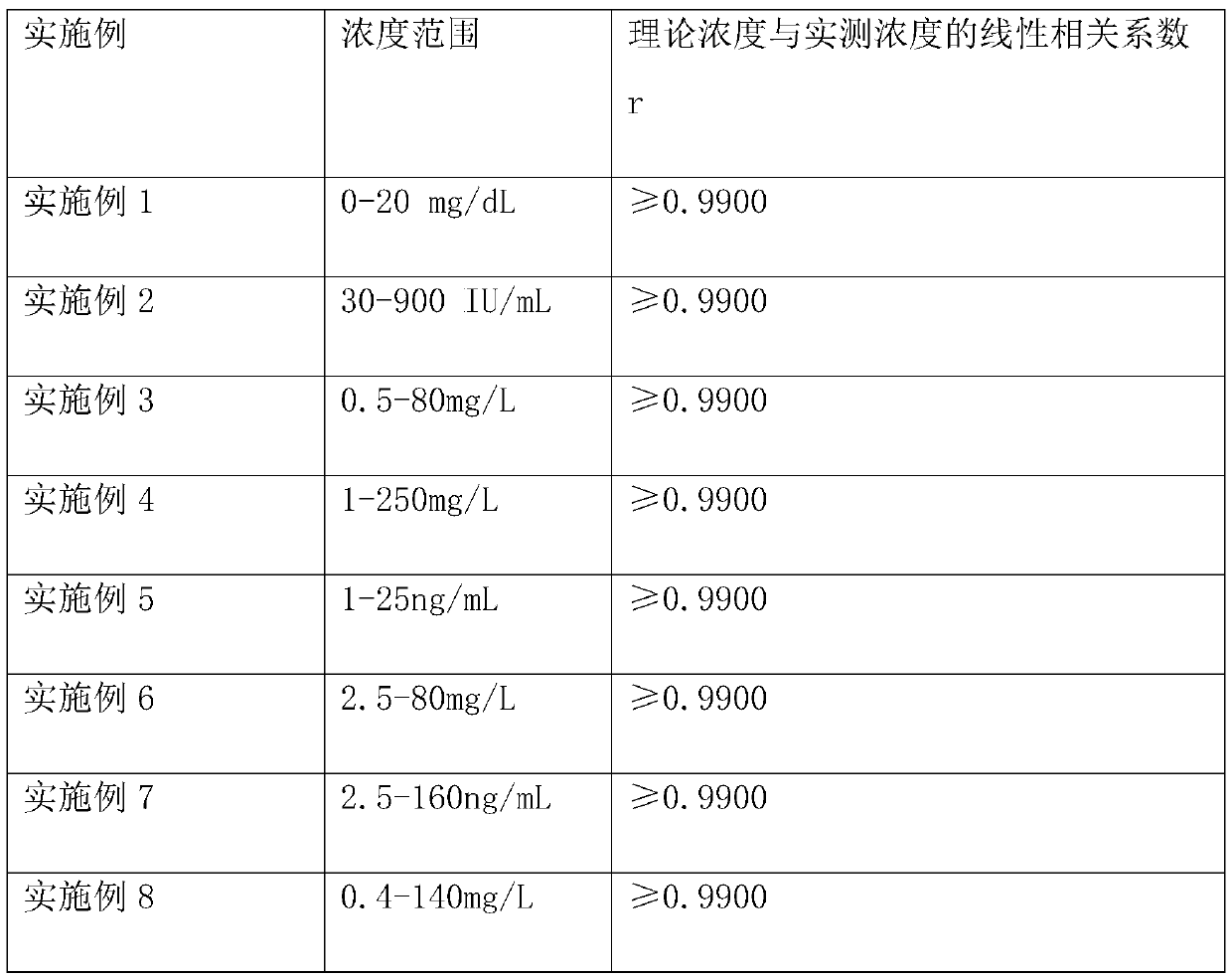Method for improving sensitivity and linearity of latex reagent
A sensitivity and latex technology, applied in the field of medical testing, can solve the problems of poor control of sensitivity and linearity, low measurement accuracy, waste of reagents, etc., to improve detection precision and accuracy, improve sensitivity and Linear relationship, high stability effect
- Summary
- Abstract
- Description
- Claims
- Application Information
AI Technical Summary
Problems solved by technology
Method used
Image
Examples
Embodiment 1
[0059] Basic Example 1 A method for improving latex reagent sensitivity and linearity
[0060] Include the following steps:
[0061] (1) Preparation of solution A: the solution A includes a monoclonal antibody to the antigen to be tested connected to polystyrene microspheres;
[0062] The method for linking the monoclonal antibody against the antigen to be tested with the latex microspheres is: after washing the latex microspheres with 2-morpholineethanesulfonic acid buffer solution, the ethyl dimethyl Aminopropylcarbodiimide and the washed latex microspheres are mixed at room temperature for the first step reaction, and the reaction time is 1 hour. The latex microspheres after the first step reaction and the adipic acid dihydrazide solution According to the ratio of parts by weight of 80:30, they were mixed and reacted overnight at 5°C for the second step of reaction to obtain activated latex microspheres. Mix at a ratio of 5:100 and react overnight at 5°C for the third ste...
Embodiment 2
[0071] Basic Example 2 A latex turbidimetric detection kit for preparing an antibody to be detected, the kit includes reagent R1 and reagent R2. The volume ratio of the reagent R1 and the reagent R2 is 3:1.
[0072] The preparation method of described reagent R2 comprises:
[0073] A. Add bovine serum albumin of 1-10g / L to the prepared C solution, and react;
[0074] B, add the glucose of 1-8g / L in the solution that above-mentioned step (1) reacts to obtain, react;
[0075] C, the solution that has reacted in the ammonium chloride buffer solution washing step (2), washes 2-3 times, then adds the sucrose of 0.5-5g / L, adjusts the latex microsphere concentration to be 0.15-0.20% with buffer solution, namely Reagent R2 is obtained.
[0076] The reaction described in the above step A is to react at 4-8°C for 1-2 hours; the reaction condition described in the above step B is to react overnight at 4-8°C.
[0077] The weight-number ratio of the bovine serum albumin in the above st...
Embodiment 3
[0089] Example 3 A kind of latex turbidimetric detection kit for preparing and detecting glycocholic acid
[0090] Detection reagents include R1 and R2,
[0091] The R1 reagent is: trismethylolaminomethane 100mmol / L, polyethylene glycol 6000 4g / L, sodium chloride 15g / L.
[0092] The R2 reagent is: polycaprolactone latex microspheres sensitized with 0.18% anti-glycocholic acid antibody in 0.1M Tris buffer.
[0093] The volume ratio of the reagent R1 and the reagent R2 is 4:1.
PUM
| Property | Measurement | Unit |
|---|---|---|
| particle size | aaaaa | aaaaa |
Abstract
Description
Claims
Application Information
 Login to View More
Login to View More - R&D Engineer
- R&D Manager
- IP Professional
- Industry Leading Data Capabilities
- Powerful AI technology
- Patent DNA Extraction
Browse by: Latest US Patents, China's latest patents, Technical Efficacy Thesaurus, Application Domain, Technology Topic, Popular Technical Reports.
© 2024 PatSnap. All rights reserved.Legal|Privacy policy|Modern Slavery Act Transparency Statement|Sitemap|About US| Contact US: help@patsnap.com










